Image diagnoses for "Scalp (hairy)"
120 results with 343 images
Results forScalp (hairy)

Angiosarcoma of the head and face skin C44.-
Angiosarcoma of the head and facial skin: the 69-year-old patient noticed this rapidly growing and recurrently bleeding 3x5 cm large, little symptomatic node around the capillitium for 6 months. After incomplete preliminary surgery within a few weeks formation of the present recurrent node. The inconspicuous erythema around the node is noticeable. After the micrographically controlled surgery, the tumor was only free of tumor after an approximately 10 x 10 cm large excision.

Angiosarcoma of the head and face skin C44.-
Angiosarcoma of the head and facial skin: the 69-year-old patient noticed this rapidly growing and recurrently bleeding 3x5 cm large, little symptomatic node around the capillitium for 6 months. After incomplete preliminary surgery within a few weeks formation of the present recurrent node. The inconspicuous erythema around the node is noticeable. After the micrographically controlled surgery, the tumor was only free of tumor after an approximately 10 x 10 cm large excision.
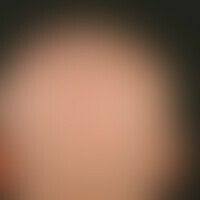
Alopecia areata (overview) L63.8
Alopecia areata totalis: complete hair loss except for a few individual hairs; with greater enlargement, the preserved (hairless) follicles can be seen

Basal cell carcinoma nodular C44.L
Basal cell carcinoma, nodular. centrally ulcerated, nonpainful ulcerated nodule in the region of the temple. ulcer not painful. characteristic for the diagnosis "basal cell carcinoma" is the raised, reflecting wall of the "ulcer" and the bizarre vessels.

Cylindrome D23.4
Cylindrome: firm, elastic, hairless knot with reflecting surface, which has not grown in recent years.
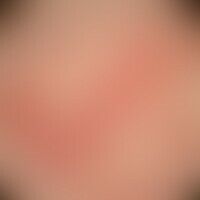
Teleangiectasia I78.8
Teleangidectasia: irregular caliber, in places ectatic capillaries in a nodular basal cell carcinoma.
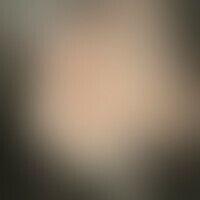
Pseudopélade L66.0
Pseudo-pelade: irregularlylimited, hairless area. follicular structure in the hairless area is completely absent. it is thus in a "scarred" final state of a previously expired inflammation leading to scarring.
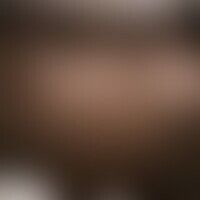
Syringome disseminated D23.L
Syringomas disseminated: about 0.2 cm large, firm, yellowish-brown, surface-smooth nodule; no itching (partial aspect of disseminated syringomas).

Pemphigus diseases (overview) L10.-
Pemphigus vulgaris: 63-year-old patient with a pemphigus vulgaris (mucocutaneous type) that has existed for 3 years; extensive painful erosions of the capillitium.

Lupus erythematosus systemic M32.9
Systemic lupus erythematosus (late onset): chronic, blurred reddish-livid (spots) plaques; concomitant recurrent fever attacks, fatigue and tiredness, arthralgia, inflammation parameters +, ANA high titer positive, rheumatoid factor +, DNA-Ak+.
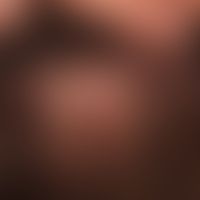
Folliculitis decalvans L66.2
Folliculitits decalvans: scarring alopecia with shiny hairless area and tufts of hair at the edges.
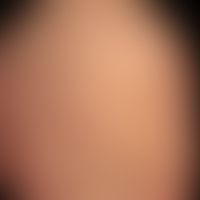
Atopic dermatitis in infancy L20.8
Atopic dermatitis in infancy: clinical picture of the so-called milk crust; here a maximum variant with an area-wide infection of the capillitium is shown.

Hidradenoma nodular D23.L
Hidradenoma nodular: rather accidentally discovered, completely sympothless, eccrine sweat gland adenoma at the capillitium.

Psoriasis capitis L40.8
psoriasis capitis: chronically inpatient red plaques extending over the entire hairy scalp. no significant scaling (caused by pre-treatment). occasional itching. apparently diffuse hair loss
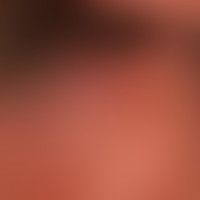
Primary cutaneous follicular lymphoma C82.6
Primary cutaneous follicular center lymphoma: Condition after treatment of an alopecia areata with DNCB about 20 years ago; for several months now, formation of smooth, painless plaques and nodules, which, according to a biopsy, affected the entire anterior half of the capillitium.
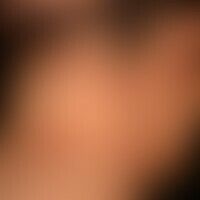
Hair dyes
Chronic contact allergic dermatitis of the capillitium (see discreet, but clearly itchy erythema) as well as of the neck and nape of the neck, triggered by para-phenylenediamine .
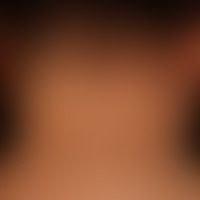
Hair dyes
Acute allergic contact dermatitis: acute recurrence (1 year later) after re-dyeing of the hair with a hair dye containing para-phenylenediamine.
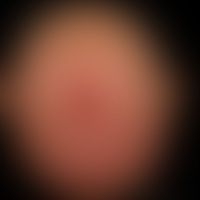
Carcinoma of the skin (overview) C44.L
Carcinoma cutanes:advanced, flat ulcerated exophytic squamous cell carcinoma with massive actinic damage. 82-year-old man with androgenetic alopecia. Pronounced spring carcinoma.
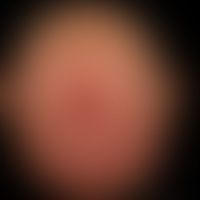
Squamous cell carcinoma of the skin C44.-
Squamous cell carcinoma in actinically damaged skin: Since more than 1 year, slowly growing, very firm, little pain-sensitive, ulcerated node, which (at the time of examination) was no longer movable on its base. Pronounced field carcinoma .
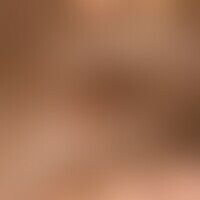
Melanoma nodular C43.L
Melanoma malignes, nodular: A solitary node that has existed for years, has been growing for more than a year, is firm, sharply defined, smooth on the surface, not hairy, and has bled repeatedly in recent weeks.
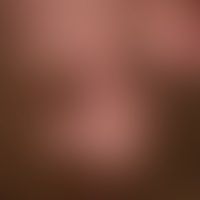
Lichen planus follicularis capillitii L66.1
Lichen planus follicularis capillitii as partial manifestation of a Lichen planus with infestation of capiliitium and oral mucosa: increasing focal hair loss. circumscribed, follicularly accentuated redness with irregular, scarring alopecia (follicular structure is missing). inlet: streigi whitish plaques of the oral mucosa as sign of Lichen planus mucosae.

Melanoma amelanotic C43.L
Melanoma malignes, amelanotic: a reddish lump that has existed for years and bled for the first time a few weeks ago, otherwise no other symptoms.

Extrinsic skin aging L98.8
Light ageing of the skin: spotty skin with small hyperpigmentations (solar lentigines) and actinic keratosis.
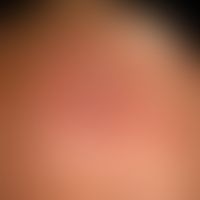
Extrinsic skin aging L98.8
Light aging of the skin: smooth atrophic skin with flat actinic keratosis (frontal area) with translucent vessels

Squamous cell carcinoma of the skin C44.-
Squamous cell carcinoma of the skin: large-nodular, locally ulcerated, locally metastasized carcinoma of the scalp.